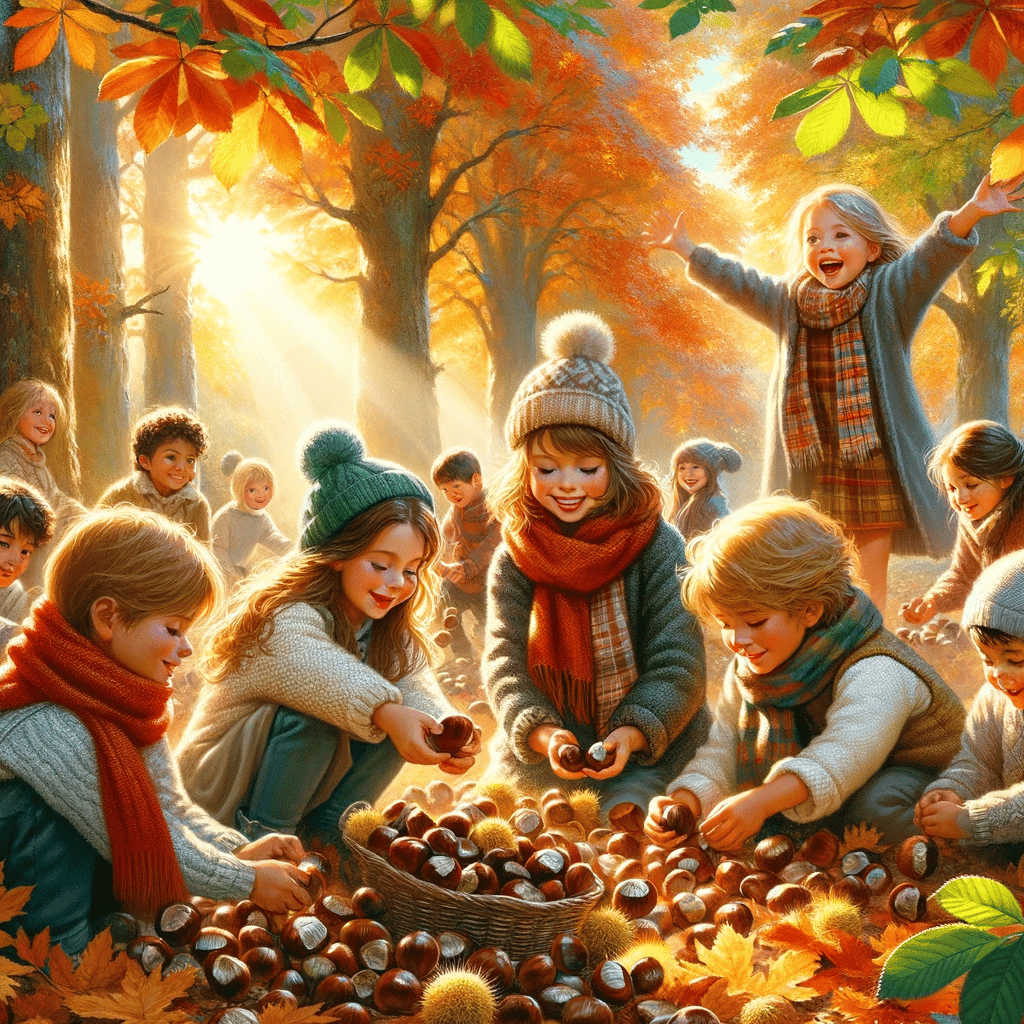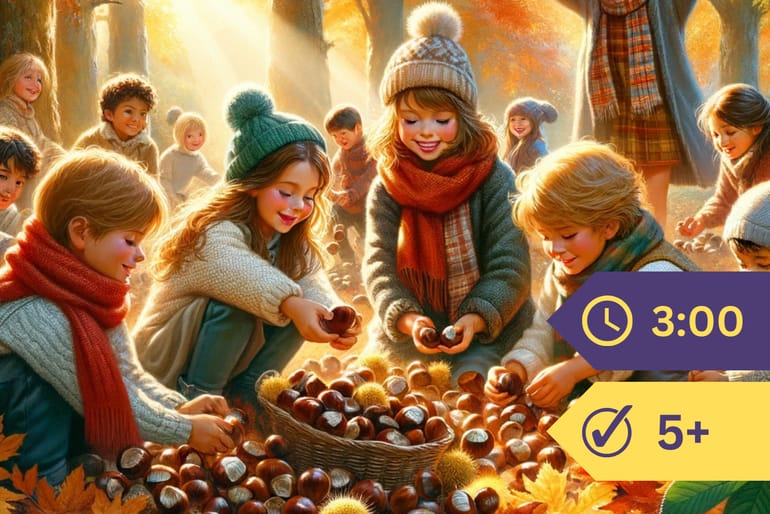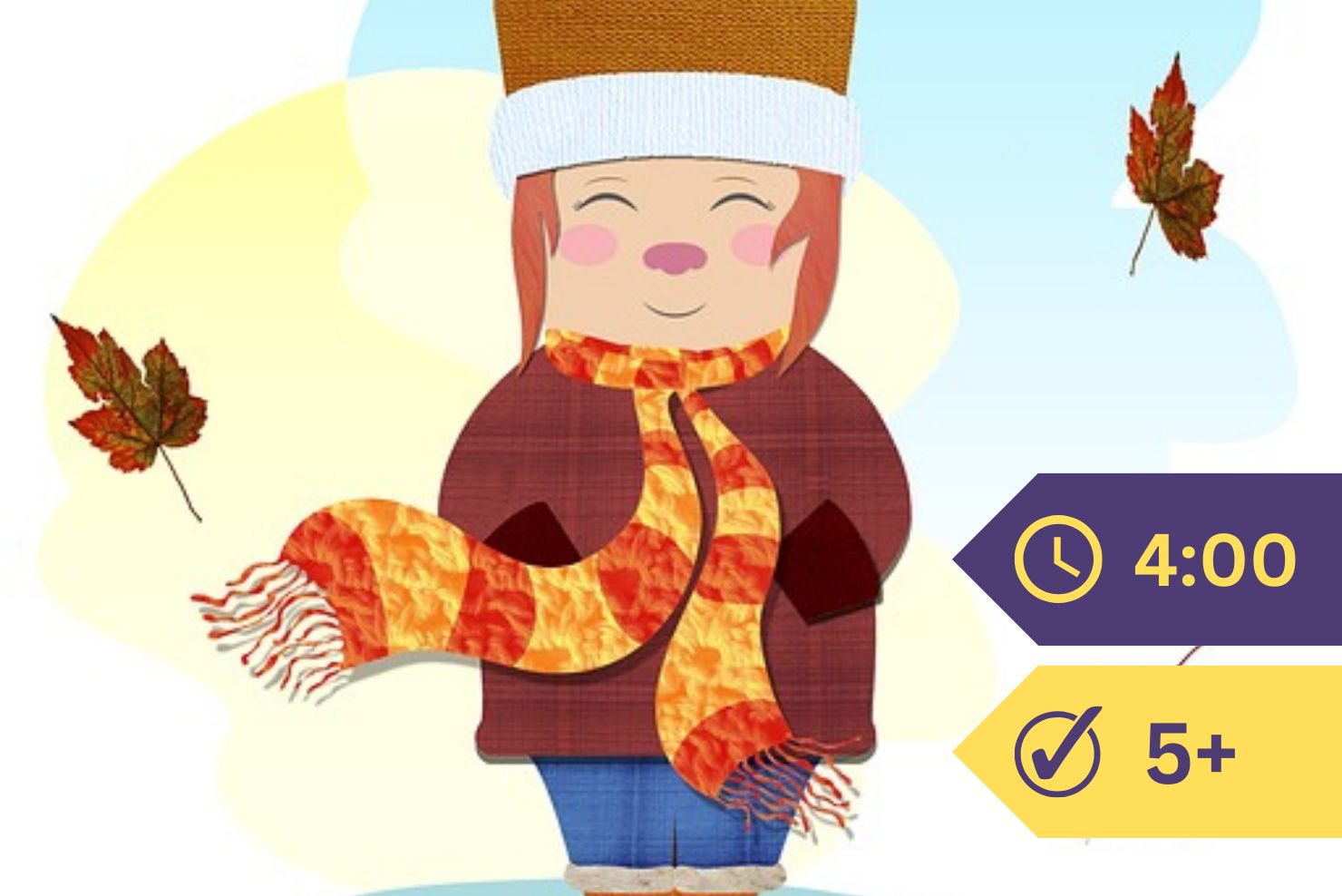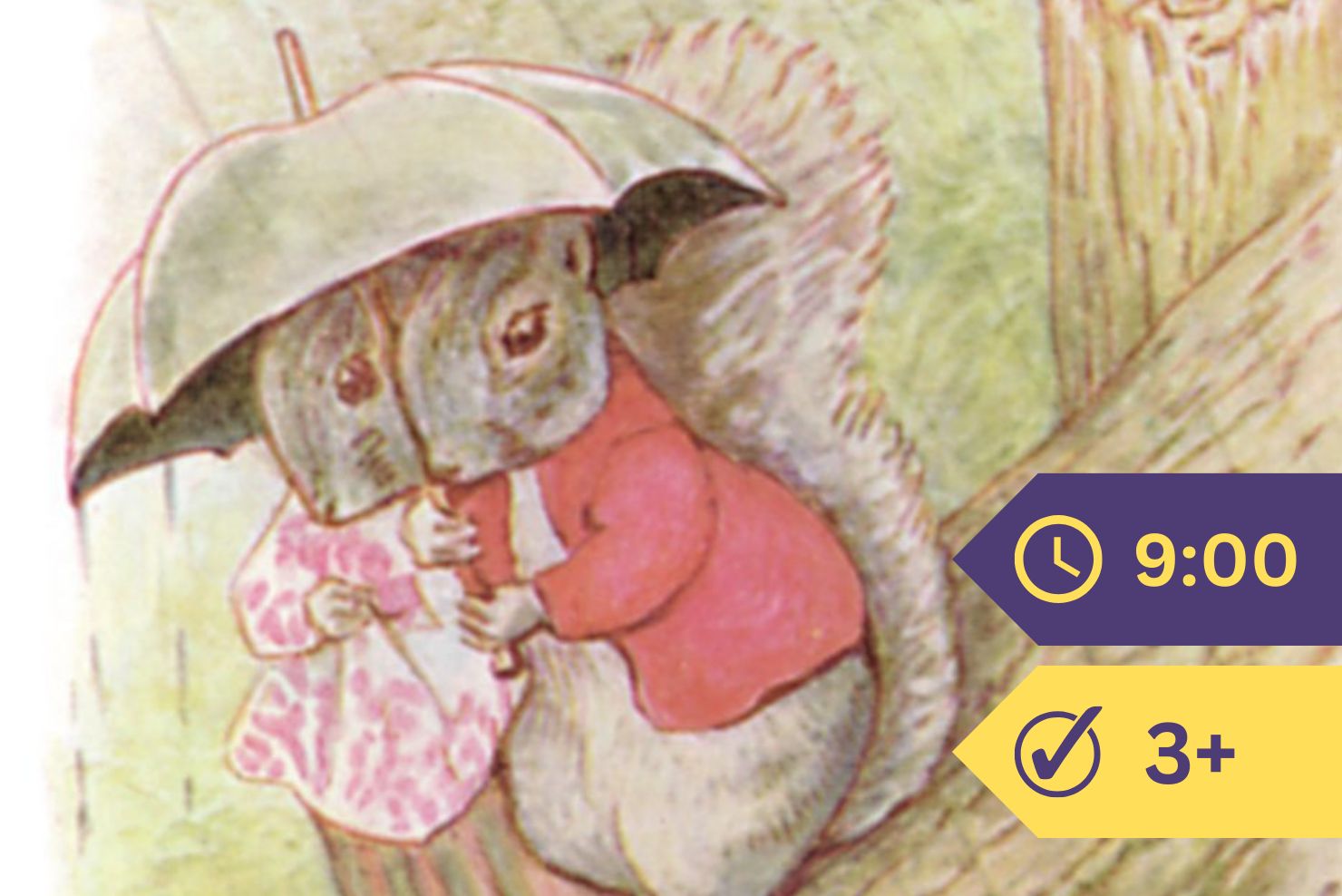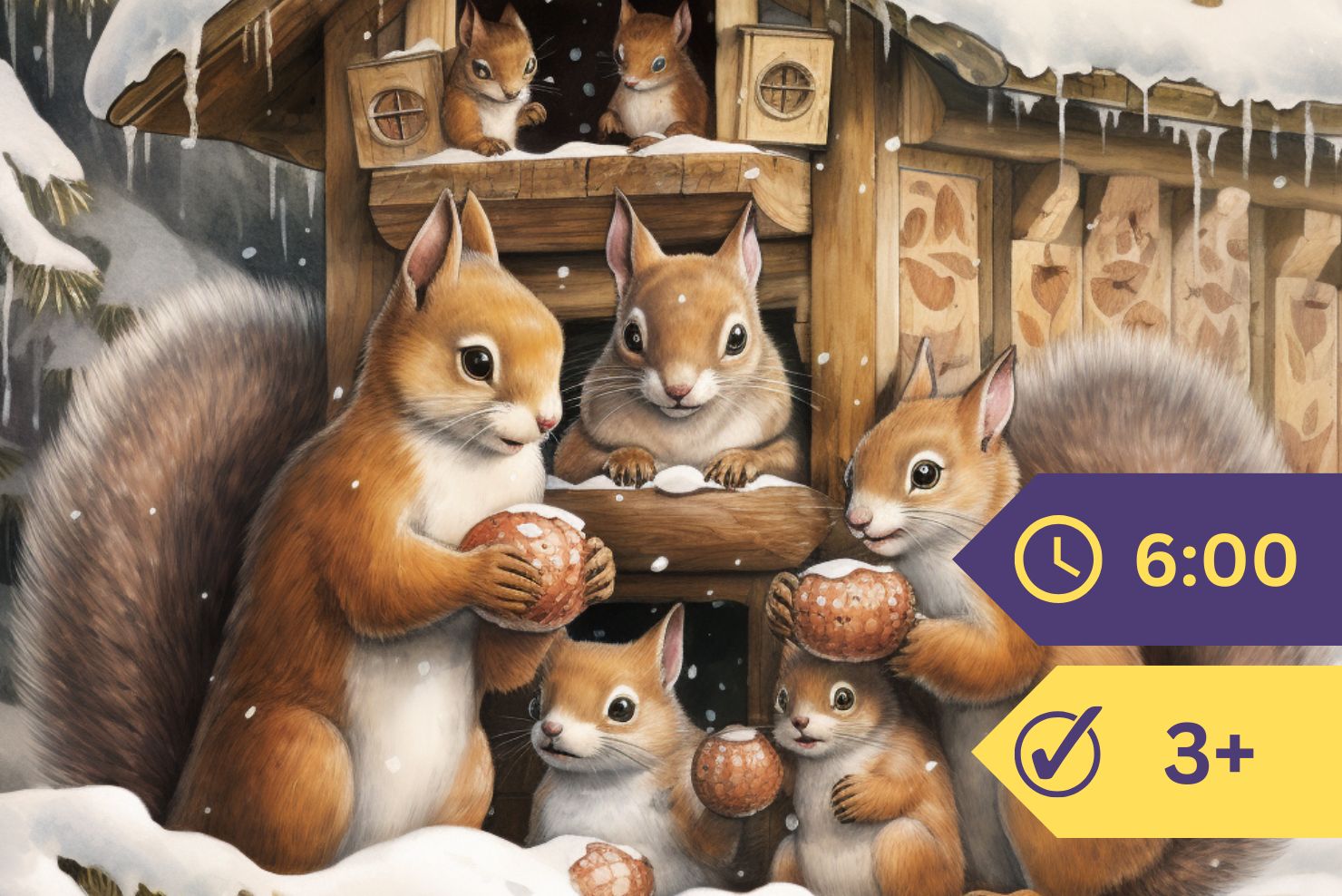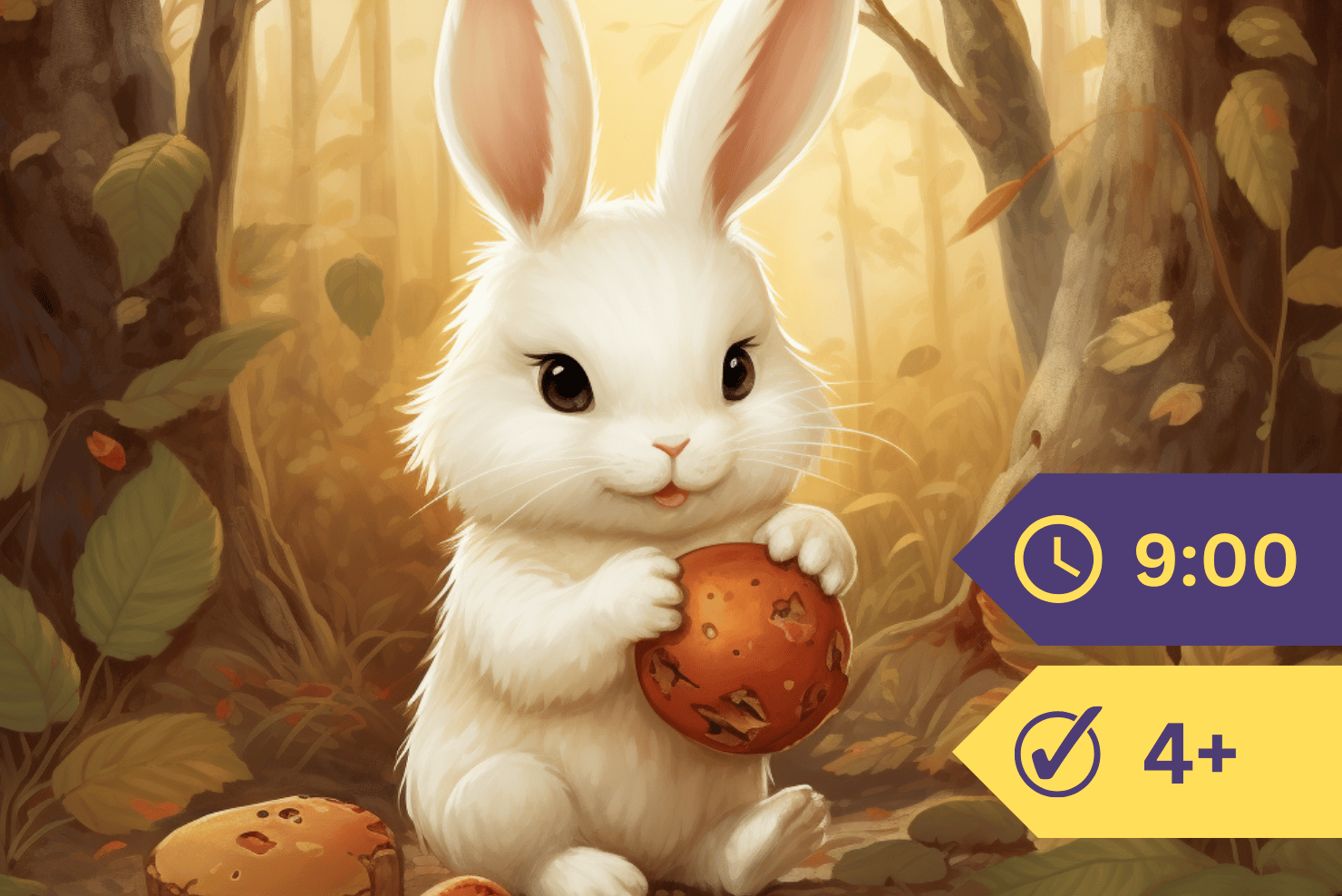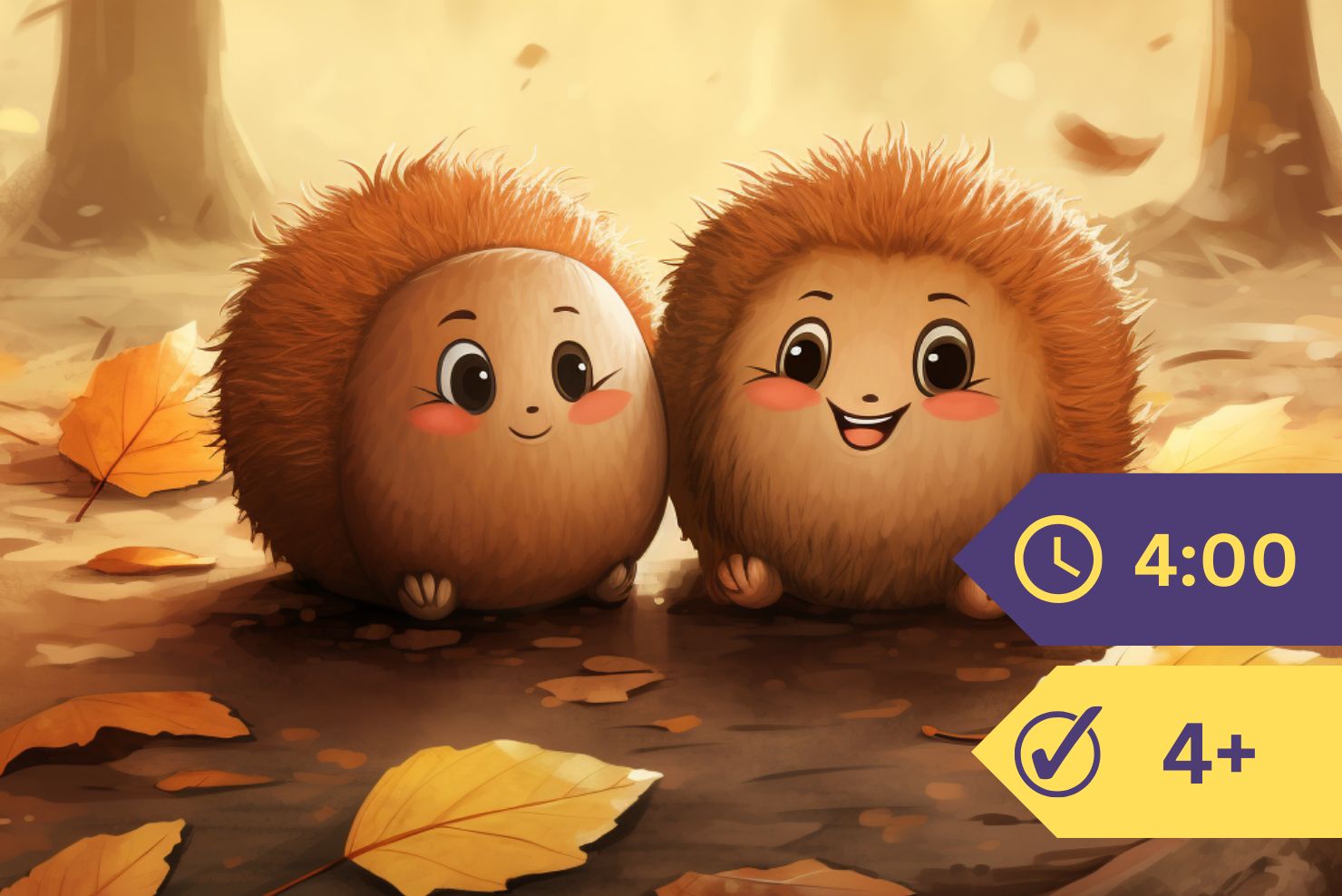At the head of this chapter you see the fruit of the chestnut tree.
What fine October days this picture brings to mind,—clear, cold mornings when we arm ourselves with baskets and a club, and go chestnuting.
Usually the boys climb the tree, and shake the branches till the open burrs rattle out their contents. But sometimes a teasing cluster refuses to set loose its treasure. Then the club comes into play. If it strikes the great burrs, and raps out their fat chestnuts, a shout of joy follows.
What a delight it is to hunt in the long grass for the glossy brown beauties just after a sudden shower from above! No one speaks. All are bent low in breathless search.
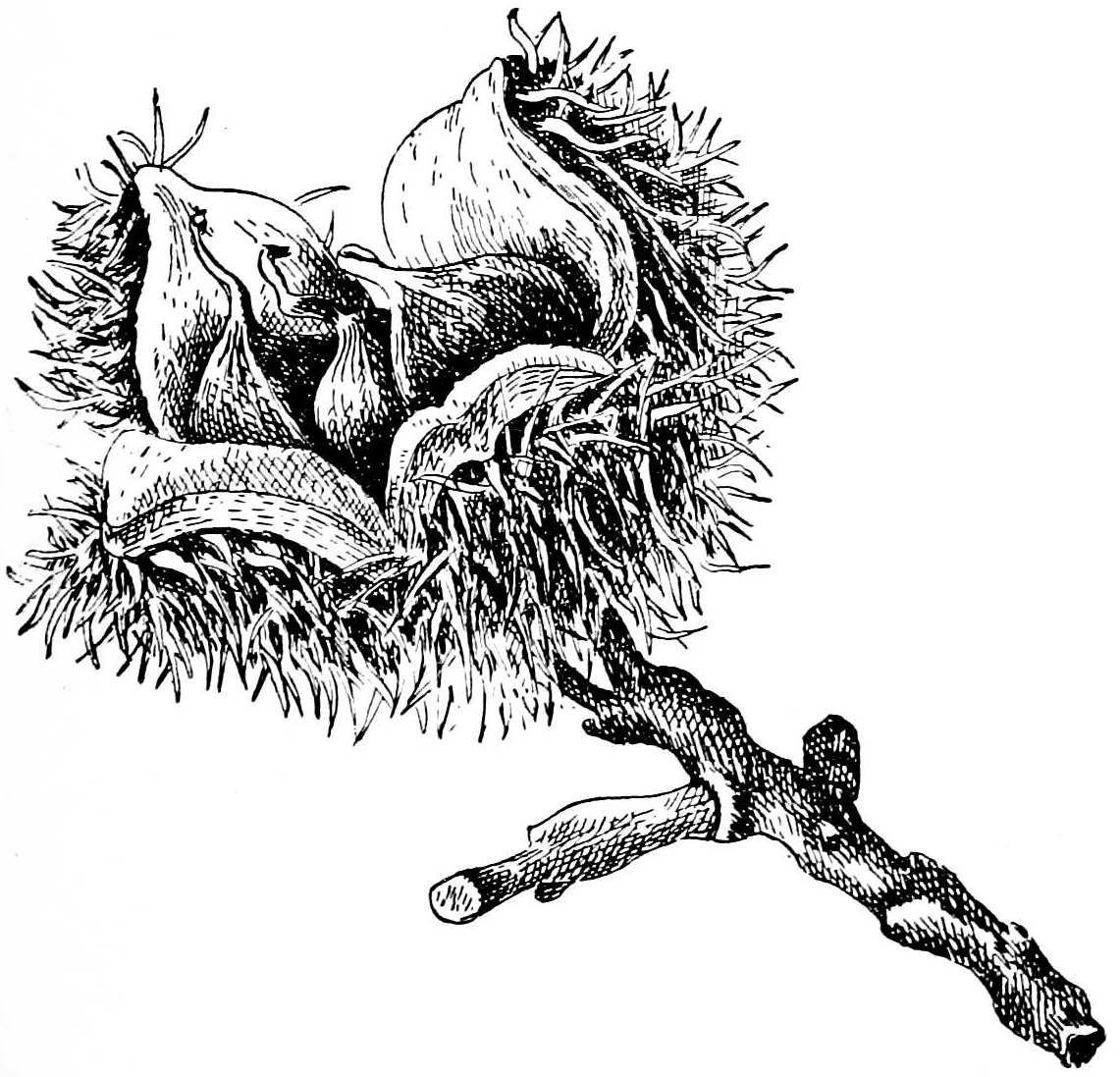
I know of nothing much more perfect in its way than an open chestnut burr, still holding its two or three fine nuts. Its green, prickly outer covering makes a fine contrast to the velvety brown lining; and within this beautiful case the plump, shining nuts are laid with the daintiest care.
Perhaps the chestnut burr is even safer as a seed case than the apple. While its seeds (the chestnuts) are young and unripe, it does not stop to plead, “Pray; don’t destroy my baby nuts!” but it seems to call out sternly, “Hands off!” and promptly punishes the boy or girl who disobeys this rough command.
But when the chestnut seeds are quite ripe, then it opens as wide as it knows how; and very tempting it looks as it unfolds its contents. A chestnut tree in October looks like one great invitation.
The acorn, the seed of the oak tree, is pretty enough as a plaything, but less pleasing than the chestnut. Only the squirrel seems to find it fair eating.

The trees which hide their seeds in nutshells contrive in different ways to send them abroad.
Many of these nuts are hoarded as winter food by the squirrels. Often in a moment of fright these little creatures drop them by the way. Again, they forget just where they deposited their hoard, or for some other reason they leave it untouched. Thus many nuts are scattered, and live to change into trees.
Others may fall into the water, and float to distant shores. The cocoanut, for example, has been carried in this way for hundreds of miles. Its outer covering protects the seed from being soaked or hurt by water; and when at last it is washed upon some distant shore, it sends up a tall cocoanut tree.
